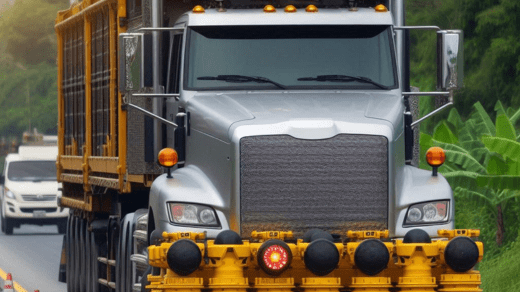Types of Vertical Lifts
Vertical lifts are classified into different types based on their working mechanism and design. One common type is the scissor lift, which uses crisscrossing supports to raise and lower the platform vertically. Scissor lifts are popular for their stability and ability to reach significant heights while providing a large working platform for operators to stand on.Another type of vertical lift is the boom lift, also known as a cherry picker. Boom lifts feature a hydraulic arm (boom) that extends outward and upward, allowing operators to reach high areas with ease. These lifts are versatile in various applications, such as maintenance work, construction projects, and tasks requiring precise positioning at height.
Benefits of Using Vertical Lifts
One significant advantage of utilizing vertical lifts is their ability to efficiently save space in various settings. Unlike traditional staircases or inclined lifts, vertical lifts can be installed in tight spaces, making them an excellent choice for buildings with limited room for conventional access solutions. vertical lift hire Their vertical movement ensures that the footprint of the lift is minimal, enabling more efficient use of available floor space.Another key benefit of vertical lifts is their versatility in accommodating different accessibility needs. These lifts can be customized to suit various requirements, such as wheelchair accessibility or transportation of heavy items. This adaptability makes vertical lifts a practical solution for a wide range of applications, from residential buildings to industrial facilities. Additionally, their ease of use and smooth operation enhance convenience for users and minimize the challenges associated with navigating between different levels.
Common Applications for Vertical Lifts
Vertical lifts are widely utilized in warehouse settings for efficiently moving goods between different levels. These lifts streamline the process of loading and unloading inventory, reducing the need for manual labor and minimizing the risk of workplace injuries. By providing easy access to high shelves and mezzanines, vertical lifts enhance storage capacity and optimize space utilization within the warehouse.In the construction industry, vertical lifts play a crucial role in facilitating the transportation of materials and equipment to elevated work areas. These lifts offer a safe and reliable means of lifting heavy loads to heights, increasing productivity on job sites and ensuring timely project completion. Additionally, vertical lifts provide workers with a stable platform to carry out tasks at elevated heights, contributing to a safer work environment.
Key Features to Look for in Vertical Lifts
When considering which vertical lift to invest in, there are several key features to keep in mind. Firstly, the lift’s maximum height and weight capacity are crucial factors to ensure it meets your specific needs. It is important to select a lift that can safely reach the required height while accommodating the weight of the materials or personnel being lifted.Additionally, the mobility and maneuverability of the vertical lift are significant features to consider. uphire Look for lifts that offer ease of movement, whether it be through compact designs for confined spaces or larger models that can navigate rough terrain. Smooth and precise controls are also essential for safe and efficient operation, allowing operators to make precise adjustments during lifting tasks.
Safety Considerations when Using Vertical Lifts
Vertical lifts are powerful tools that allow workers to access heights safely and efficiently. However, they also pose certain risks if not used properly. When operating a vertical lift, it is crucial to ensure that all safety features are in proper working condition and that operators are trained on how to use the lift correctly. This includes understanding weight capacities, proper positioning of the lift on stable ground, and following manufacturer guidelines for operation.Proper personal protective equipment (PPE) should also be worn when using vertical lifts, including helmets, harnesses, and non-slip footwear. Additionally, regular inspections should be conducted to check for any signs of wear and tear on the lift, as well as routine maintenance to keep it functioning safely. By prioritizing safety considerations when using vertical lifts, the risk of accidents and injuries can be significantly reduced, creating a secure working environment for all involved.
Maintenance Tips for Vertical Lifts
Regular maintenance is essential for ensuring the smooth and safe operation of vertical lifts. One key maintenance tip is to regularly inspect the lift for any signs of wear and tear, such as worn cables, loose bolts, or hydraulic fluid leaks. Addressing these issues promptly can prevent more significant problems down the line.Additionally, lubricating moving parts of the vertical lift according to the manufacturer’s guidelines can help extend the lifespan of the equipment. Keeping a detailed maintenance log to track inspections, repairs, and servicing can also aid in identifying any recurring issues and scheduling regular maintenance tasks efficiently.
Factors to Consider When Choosing a Vertical Lift
When choosing a vertical lift, one of the key factors to consider is the lift capacity. It’s important to assess the weight of the materials or equipment that will be lifted to ensure that the vertical lift can handle the required load without any safety risks. Additionally, the vertical lift’s maximum height should be taken into account to ensure it can reach the necessary working heights within your facility.Another important factor to consider is the type of power source the vertical lift requires. Depending on your facility’s layout and access to power outlets, you’ll need to choose between electric, battery-powered, or hydraulic vertical lifts. Each power source has its own advantages and limitations, so it’s crucial to select the one that best suits your specific needs and operating environment.
Comparing Vertical Lifts to Other Access Solutions
Vertical lifts are commonly favored over traditional ladders for their enhanced stability and safety features. Compared to ladders, which can be unstable and require frequent repositioning, vertical lifts provide a secure platform for workers to perform tasks at height without the risk of falls or accidents. This increased stability not only improves safety but also boosts efficiency by allowing workers to focus on their tasks rather than worrying about maintaining balance.In addition to improved safety and stability, vertical lifts offer greater versatility and maneuverability compared to scaffolding systems. While scaffolding may be cumbersome to assemble, adjust, and dismantle, vertical lifts are designed for quick and easy setup, enabling users to access elevated areas with minimal effort. The flexibility of vertical lifts makes them particularly well-suited for tasks that require frequent height adjustments or access to hard-to-reach areas, providing a convenient and efficient solution for various industries.
Case Studies Highlighting Successful Vertical Lift Implementations
One successful vertical lift implementation took place in a large warehouse facility that faced challenges with efficiently moving heavy materials to various levels. By incorporating a vertical lift system, the company was able to streamline their operations, increasing productivity and reducing manual handling risks.In another instance, a construction company integrated vertical lifts into their workflow to assist in transporting workers and materials to different floors of a high-rise building project. This implementation not only enhanced worker safety but also accelerated the construction timeline, ultimately leading to cost savings and client satisfaction.
Future Trends in Vertical Lift Technology
As technology advances, vertical lifts are expected to become more efficient and versatile. One of the key trends in vertical lift technology is the integration of smart features, such as sensors and automation, to enhance safety and ease of use. These smart lifts will be able to detect obstacles, adjust their speed and direction accordingly, and even communicate with other equipment on the worksite for improved coordination.Moreover, future vertical lifts are likely to be more compact and lightweight without compromising on load capacity. This will enable greater mobility and flexibility in various applications, making them ideal for use in tight spaces or on multiple levels within a building. Additionally, advancements in battery technology will lead to the development of electric vertical lifts with longer run times and faster charging capabilities, reducing downtime and increasing productivity.


